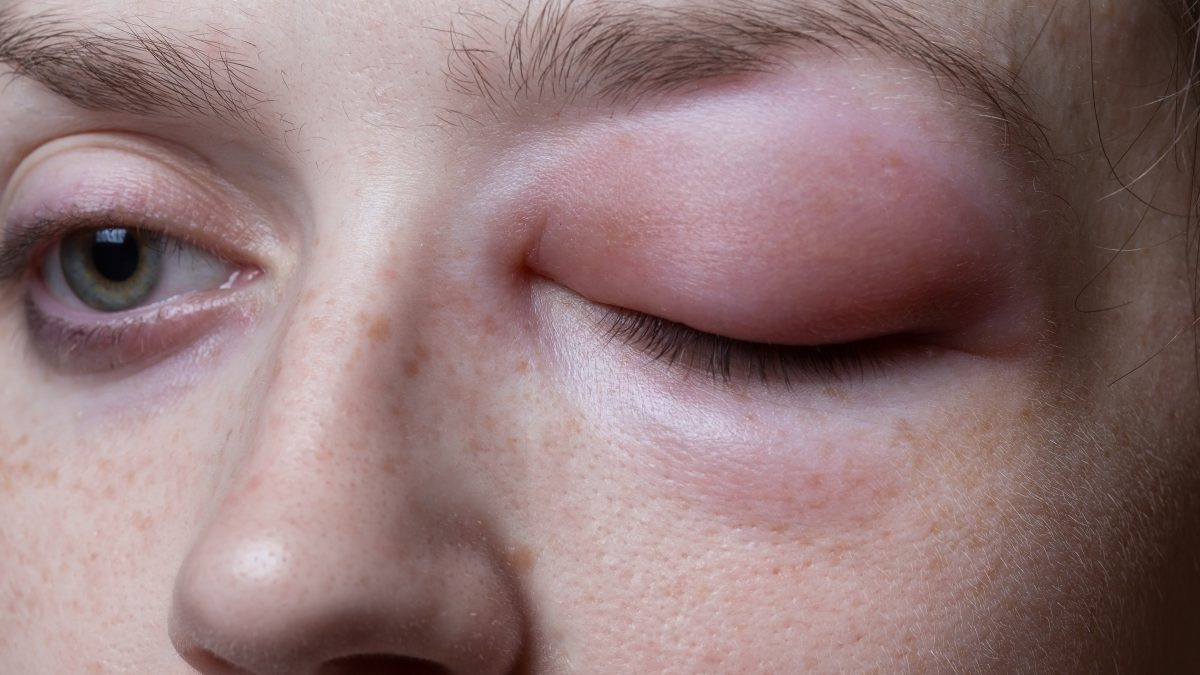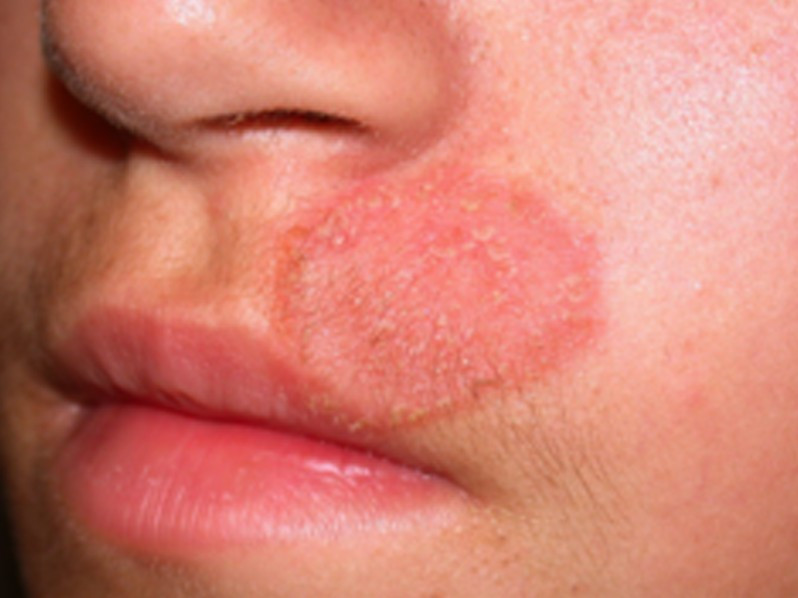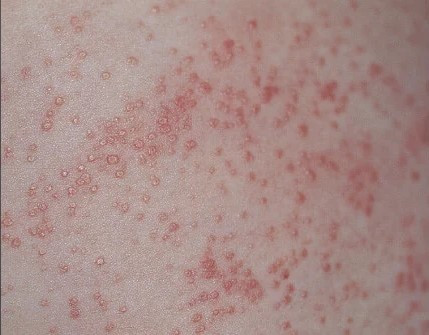Definition
Angioedema is swelling in the deeper layers of the skin. This condition can occur in several parts of the body, such as:
- Face
- Throat
- Larynx (voice box)
- Uvula (small projection that hangs at the back of the tongue)
- Arms
- Hands
- Feet
Angioedema can be dangerous if swelling occurs in the throat or tongue as it can cause difficulty breathing. If this happens, you should seek medical help immediately.
Causes
Allergic Angioedema
This is the most common type of angioedema. Allergic reactions that occur can be triggered by foods such as shellfish, fish, peanuts, tree nuts, eggs, or milk. Allergies can also be caused by exposure to foreign substances such as plant pollen, animal dander, insect stings, or latex.
Drug-Induced Angioedema
Drug-induced angioedema usually occurs within an hour after exposure to the suspected trigger medication. Some of these drugs include:
- Penicillin antibiotics to fight bacterial infections
- Aspirin, used to relieve pain, and inflammation, and prevent blood clotting
- Nonsteroidal anti-inflammatory drugs (NSAIDs) commonly used to relieve pain or inflammation such as ibuprofen and naproxen
- ACE inhibitor blood pressure medications, although long-used, can still cause sudden angioedema reactions
Hereditary Angioedema (HAE)
This is a rare condition caused by genetic factors. HAE is characterized by recurrent angioedema episodes without accompanying symptoms of red, itchy skin rash or hives, often affecting the skin, upper respiratory tract, and gastrointestinal tract. Usually, HAE appears before the age of 12. Sufferers can inherit this condition to their offspring.
HAE occurs when the body fails to produce enough C1 esterase inhibitor blood protein. C1 esterase protein allows fluid from the blood to move to other tissues, causing swelling.
Acquired Angioedema
This is another very rare type of angioedema, which has symptoms similar to HAE. Unlike HAE, this rare type generally does not occur until you are over 40 years old. This angioedema usually occurs when someone has a weakened immune system. Unlike HAE, this condition is not inherited by the patient's offspring.
Idiopathic Angioedema
Idiopathic means the cause is not known. Experts speculate several possible causes of this angioedema, such as:
- Anxiety or stress
- Mild infection
- High or low temperatures
- Excessive exercise
Risk factor
Several factors can increase the risk of someone developing angioedema, such as:
- Having experienced previous allergic reactions or angioedema
- Suffering from diseases such as lupus, lymphoma, thyroid disease, hepatitis, HIV, cytomegalovirus infection, or Epstein-Barr virus infection
- Asthma
- Having undergone blood transfusions
- Having a family history of angioedema
- Using drugs such as nonsteroidal anti-inflammatory drugs (NSAIDs) for pain or inflammation, ACE inhibitors or ARBs to lower high blood pressure, or receiving recombinant tissue plasminogen activator (rtPA) therapy for stroke patients
Symptoms
The most common sign of angioedema is swelling with red rash beneath the skin's surface. This sign can occur in specific areas such as the legs, hands, eyes, or lips. Swelling usually occurs within minutes to hours after exposure to triggers.
Swelling is usually accompanied by a feeling of thickness or numbness, tightness, redness, pain, or warmth in the swollen area of the body. If it occurs in the intestines, although rare, it can cause unexplained abdominal pain and cramps. In more severe cases, swelling can spread to other parts of the body.
Angioedema may or may not be accompanied by itching. In rare cases, people with angioedema may experience swelling of the throat, hoarseness, and difficulty breathing. If swelling occurs in the throat, tongue, or other airways and the patient has difficulty breathing, this is a life-threatening condition and requires emergency assistance.
Diagnosis
Doctors can diagnose the type of angioedema that occurs through the symptoms that arise, descriptions of several possible causes, and the patient's and family's medical history. Doctors will also check whether patients are using certain drugs that can trigger angioedema.
For example, there is a history of allergic reactions such as itching or red rash on the skin before angioedema occurs. This indicates that the angioedema that occurs tends to lead to allergic angioedema. Meanwhile, if there is a family history of angioedema, it may be a sign that angioedema may arise due to inherited genetic factors.
A person with angioedema may be referred for further examination to confirm the type and cause of their angioedema. These examinations include:
- Skin prick tests, to determine if there is a connection between angioedema and allergic reactions
- Blood tests are done to see how the immune system responds to certain allergens
- Special examination of the C1 esterase inhibitor protein, if the level is low, indicates that the patient is experiencing hereditary or inherited angioedema.
Management
Angioedema usually improves on its own within a few days and does not leave scars. However, treatment can reduce severe itching if symptoms persist. If treatment is needed, medications used include:
- Antihistamines and oral corticosteroids: These medications can relieve swelling, itching, and inflammation.
- Medication to suppress the immune system: If antihistamines and corticosteroids do not reduce symptoms.
- Other medications to reduce pain and swelling: Such as non-steroidal anti-inflammatory drugs (NSAIDs) other than steroids.
- Special medications for hereditary angioedema: If you have a type of angioedema inherited in your family, specific medications can relieve symptoms and control the levels of certain proteins in the blood to reach normal levels that do not cause symptoms.
If angioedema is triggered by medication use, the doctor will change your medication. In serious attacks, patients may need to be given a medication called epinephrine via injection into the bloodstream.
Home Remedies
Here are some tips that can be done at home to reduce discomfort:
- Avoid triggers: Avoid compounds that can trigger angioedema, such as foods, medications, pollen, pet dander, latex, or insect stings.
- Discontinue triggering medications: Stop using medications that cause symptoms.
- Apply cold compresses: Apply cold compresses to affected areas of the body with a cold cloth for several minutes to soothe the skin and reduce the urge to scratch.
- Wear loose, soft clothing: Wear loose, soft cotton clothing, avoiding rough, tight, or woolen clothing.
- Sun protection: Protect your skin from the sun by applying sunscreen about half an hour before outdoor activities and seeking shade to reduce discomfort due to angioedema.
Complications
Severe angioedema can be life-threatening if there is swelling of the tongue or throat, obstructing the airway. Itching and other skin discomforts can also often interfere with activities. Following the initial management tips mentioned above can help reduce these complaints.
Prevention
You can prevent allergic reactions and angioedema by avoiding foods, medications, or other conditions that trigger them. If you don't know what causes your angioedema, try keeping a daily record to track foods, symptoms, and situations associated with your symptoms.
If you have a history of angioedema due to plant pollen or contact with animals, bathe and change your clothes every time you are exposed to pollen or those animals.
Doctors may recommend that you take antihistamine medication regularly every day, not just when you need it. This therapy can help prevent allergic reactions and angioedema and make your symptoms milder.
When to see a doctor?
Generally, mild angioedema can be managed at home. Consult a doctor if symptoms persist for more than a few days. Seek emergency help if you experience swelling of your tongue, lips, or mouth, or if you have difficulty breathing.
- dr Hanifa Rahma
Silver, J. (2021). What is angioedema?. Retrieved 1 Maret 2022, from https://www.webmd.com/skin-problems-and-treatments/angioedema-overview
Hives and angioedema. (2021). Retrieved 1 Maret 2021, from https://www.mayoclinic.org/diseases-conditions/hives-and-angioedema/symptoms-causes/syc-20354908
Murrell, D. (2018). Everything you need to know about angioedema. Retrieved 1 Maret 2022, from https://www.medicalnewstoday.com/articles/216095
Martinez, K. (2021). Angioedema and hives. Retrieved 1 Maret 2022, from https://www.healthline.com/health/angioedema
Surin-Lord, S. (2021). What to know about angioedema and hives. Retrieved 1 Maret 2022, from https://www.medicalnewstoday.com/articles/angioedema-hives












